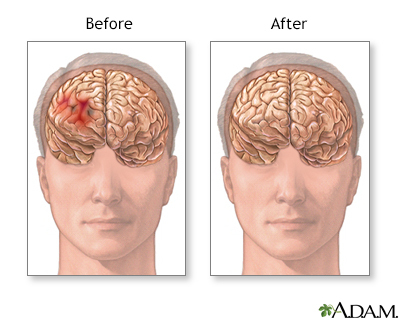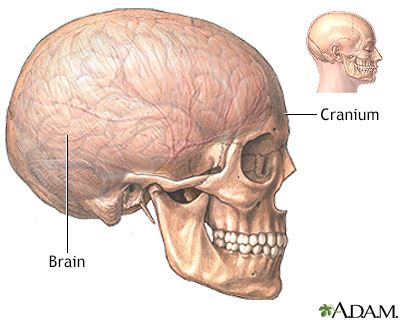After Struggle With Unseen Threat, Taylor Returns to the Water
Taylor Green gazes across his favorite place in the world, scanning the top of Lake Panasoffkee’s spring-fed water. But, in many ways, this 20-year-old pro…

Update your location to show providers, locations, and services closest to you.
Brain surgery is an operation to treat problems in the brain and surrounding structures.
Craniotomy; Surgery - brain; Neurosurgery; Craniectomy; Stereotactic craniotomy; Stereotactic brain biopsy; Endoscopic craniotomy
Before surgery, the hair on part of the scalp is shaved and the skin is cleaned. The doctor makes a surgical cut through the scalp to expose the bone (skull). The location of this cut depends on where the problem in the brain is located.
The surgeon creates a hole in the skull and removes a portion of the bone (a bone flap).
Sometimes, the surgeon will make a smaller hole and insert a tube with a light and camera on the end. This is called an endoscope. The surgery will be done with tools placed through the endoscope. An MRI or CT scan can help guide the doctor to the proper place in the brain.
During surgery, your surgeon may:
The bone flap is usually replaced after surgery, using small metal plates, sutures, or wires. This brain surgery is called a craniotomy.
The bone flap may not be put back if your surgery involved a tumor or an infection, or if the brain was swollen. This brain surgery is called a craniectomy. The bone flap may be put back during a future operation.
The time it takes for the surgery depends on the problem being treated.
Brain surgery may be done if you have:
Risks for anesthesia and surgery in general are:
Possible risks of brain surgery are:
Your doctor will examine you, and may order laboratory and imaging tests.
Tell your doctor or nurse:
During the days before the surgery:
On the day of the surgery:
After surgery, you will be closely monitored by your health care team to make sure your brain is working properly. The doctor or nurse may ask you questions, shine a light in your eyes, and ask you to do simple tasks. You may need oxygen for a few days.
The head of your bed will be kept raised to help reduce swelling of your face or head. The swelling is normal after surgery.
Medicines will be given to relieve pain.
You will usually stay in the hospital for 3 to 7 days. You may need physical therapy (rehabilitation).
After you go home, follow any self-care instructions you're given.
How well you do after brain surgery depends on the condition being treated, your general health, which part of the brain is involved, and the specific type of surgery.


Nikova A, Birbilis T. The basic steps of evolution of brain surgery. Maedica (Bucur). 2017;12(4):297-305. PMID: 29610595 pubmed.ncbi.nlm.nih.gov/29610595/.
Patterson JT. Neurosurgery. In: Townsend CM Jr, Beauchamp RD, Evers BM, Mattox KL, eds. Sabiston Textbook of Surgery. 21st ed. St Louis, MO: Elsevier; 2022:chap 68.
Zada G, Attenello FJ, Pham M, Weiss MH. Surgical planning: an overview. In: Winn HR, ed. Youmans and Winn Neurological Surgery. 7th ed. Philadelphia, PA: Elsevier; 2017:chap 18.


Our community and patient programs provide great value to patients, families and loved ones. People can find support, educational materials, expert consultants and more. In most instances, these programs are offered free of charge.
Designed to help you and your child prepare for common hospital procedures.
Taylor Green gazes across his favorite place in the world, scanning the top of Lake Panasoffkee’s spring-fed water. But, in many ways, this 20-year-old pro…

March 15, 2023
JUPITER, Fla. — A new study of the aggressive brain cancer glioblastoma suggests that two specific cancer cell mutations may work together to help hide tumors…
UF Health Cancer Center, +1 more

Scientists at Johns Hopkins University are working to develop a device they say can be used like an ultrasound machine to find tumor tissue within the brain. The apparatus is a variation of an...
Need a quick hit of sugar to get you through that mid-afternoon meeting or help you decipher that budget report? Maybe you need some extra iron will just to resist having one more chocolate chip...